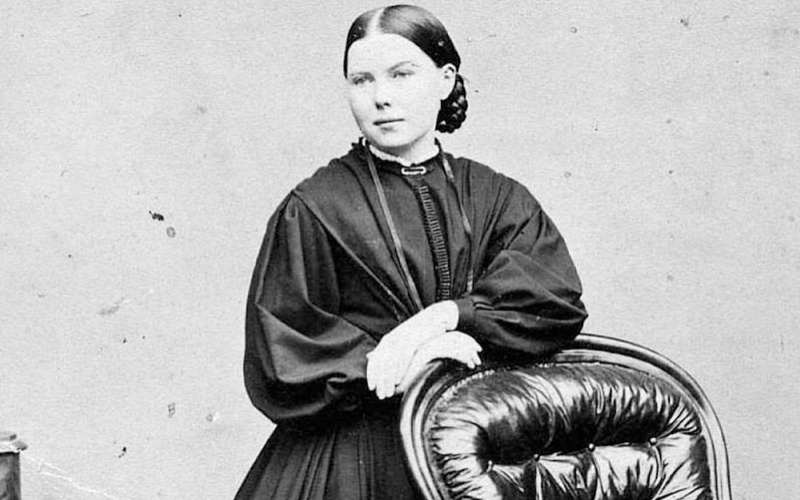What is the Charlotte Mason Method? (Educational Philosophy)
The Charlotte Mason method is an educational approach that was developed by Charlotte Mason, a British educator, and reformer in the late 19th and early 20th centuries. This method emphasizes a holistic approach to education, seeking to educate the whole child—mind, body, and spirit. The Charlotte Mason method is known for its emphasis on living books, nature study, and short focused lessons.
There are several key principles of the Charlotte Mason method.
Living Books
Charlotte Mason believed in the power of using living books, which are high-quality literature that engages the reader and presents knowledge in a narrative and personal way. These books are written by passionate authors who have expertise in the subject matter and are considered to be excellent resources for education. Rather than relying solely on dry textbooks, living books help children develop a love for learning and connect with the material on a deeper level.
Short Focused Lessons
The Charlotte Mason method promotes short and focused lessons to maintain children’s attention and concentration. The idea is to avoid overwhelming students with lengthy lectures and instead provide concise and meaningful instruction. This allows children to absorb the material more effectively and promotes active learning.
Nature Study
Nature study is a significant component of the Charlotte Mason method. It involves regular outdoor exploration and observation of the natural world. Children are encouraged to engage with nature, make scientific observations, and develop a sense of wonder and appreciation for the environment. Nature study is believed to nurture a child’s curiosity, observation skills, and connection to the world around them.
Copywork and Narration
Narration is a method used in the Charlotte Mason approach to assess understanding and retention of knowledge. After reading a passage or listening to a lesson, students are asked to narrate or retell what they have learned in their own words. This process helps children internalize the material, improves comprehension, and develops language skills.
Copywork is another method used by Charlotte Mason. Before children are ready for written narrations and dictations, a child does copywork. This is where are well written text is selected and the student copies this text. This allows the student to learn how to write by copying examples are well written text.
Habit Formation
The Charlotte Mason method places great emphasis on the formation of good habits. Children are encouraged to develop habits of attention, obedience, truthfulness, and responsibility, among others. The belief is that cultivating positive habits helps children become self-disciplined, responsible individuals and prepares them for success in various areas of life.
Art, Music, and Handicrafts
The Charlotte Mason method recognizes the importance of the arts in education. It encourages exposure to art, and classical music, and the development of handicraft skills. These activities are seen as essential for fostering creativity, self-expression, and a well-rounded education.
Relationships
Charlotte Mason talks about different relationships that a child has:
- Relationship to a parent and family — She believed that parents are the primary educators and should actively engage in their child’s learning journey. The parent-child relationship is characterized by love, trust, and guidance.
- Relationship to their teacher — Charlotte Mason advocated for a respectful and nurturing relationship between teachers and students. Teachers are seen as guides and facilitators, fostering a love for learning and providing a rich educational experience. This relationship is based on mutual respect, trust, and genuine interest in the student’s growth.
- Relationship to the textbooks and living books they read — Charlotte Mason emphasized the importance of using high-quality literature, or living books, in education. She believed that the relationship between the student and the book should be personal and engaging.
- Relationship to nature — She believed that direct observation and engagement with nature stimulate curiosity, wonder, and a sense of awe. Students are encouraged to develop a deep relationship with the natural environment, cultivating a sense of stewardship and connection to the world around them.
- Relationship to ideas — students should engage with big ideas and concepts rather than mere facts. The student-ideas relationship involves grappling with important ideas, making connections, and forming personal opinions. Students are encouraged to explore and express their own thoughts, fostering critical thinking, and developing their own intellectual framework.
- Relationship to things — respect for the things in the home and the classroom. Handle things with care, so you do not break them. Learn how to use things properly.
- Relationship to the emotional self — self-awareness and self-discipline. Students are encouraged to develop a positive relationship with themselves, cultivating habits of attention, responsibility, and perseverance. This self-discipline allows students to take ownership of their learning and character development.
- Relationship to the physical self — a body has to be healthy.
- Relationship to history — the past is connected with the present, which is connected with the future.
- Relationship to the community — we are part of a community and we have a relationship to that community.
- Relationship to God — we have a personal relationship with God.
Who is Charlotte Mason?
Charlotte Mason (1842-1923) was a British educator and reformer who developed a holistic educational philosophy known as the Charlotte Mason method. She dedicated her life to improving the quality of education for children and promoting a more nurturing and comprehensive approach to learning.
Charlotte Mason believed in the innate capabilities and curiosity of children and advocated for an education that would nurture their whole being—mind, body, and spirit. Her approach rejected rote memorization and mechanical teaching methods, focusing instead on engaging students in meaningful and living experiences.
Mason emphasized the importance of real-life connections and living ideas in education. She promoted the use of high-quality literature, known as living books, as a means of presenting knowledge in a narrative and personal way. These books, written by passionate authors, were meant to inspire children and foster a love for learning.
Another key aspect of Mason’s philosophy was the integration of nature into education. She believed that direct observation and engagement with the natural world were vital for children’s development. Nature study, outdoor exploration, and regular exposure to the environment were considered integral parts of a child’s education.
Mason also emphasized the cultivation of good habits and character traits. She believed that the formation of positive habits, such as attention, honesty, and responsibility, would lay the foundation for a well-rounded individual.
Her six-volume book series, titled “The Original Homeschooling Series,” remains a significant resource for educators and parents who follow the Charlotte Mason method.
Summary
The Charlotte Mason method has gained popularity among homeschooling families and educators who value a balanced and gentle approach to education. It emphasizes the cultivation of a child’s character, curiosity, and love for learning through living books, nature study, short lessons, narration, and the integration of art and music. The method continues to influence educational practices today and is cherished for its focus on the whole child’s development.

